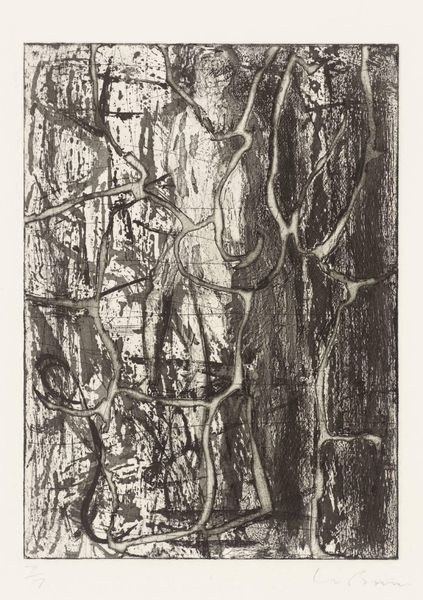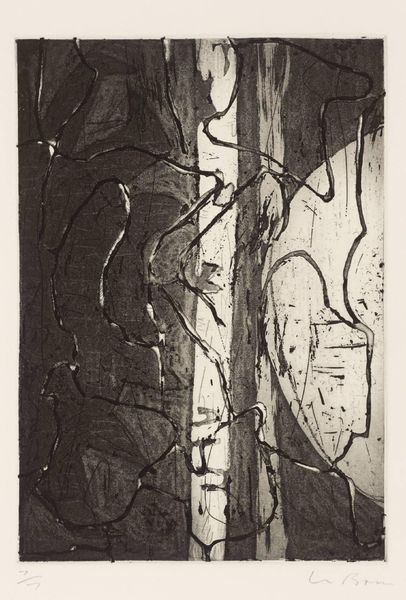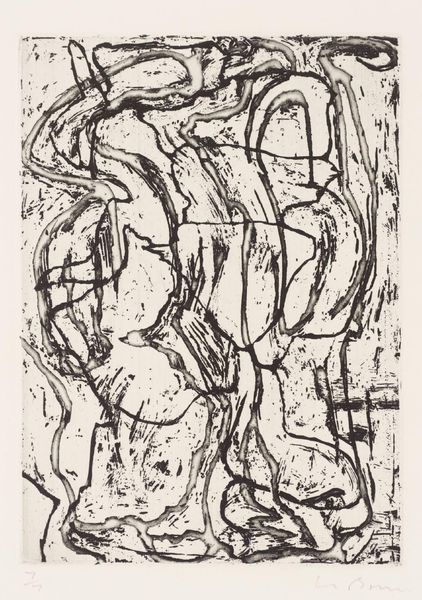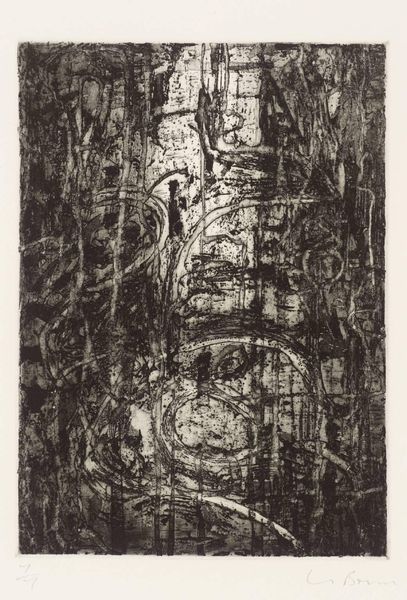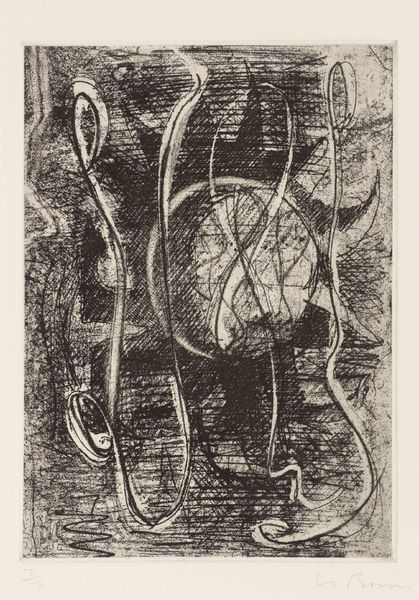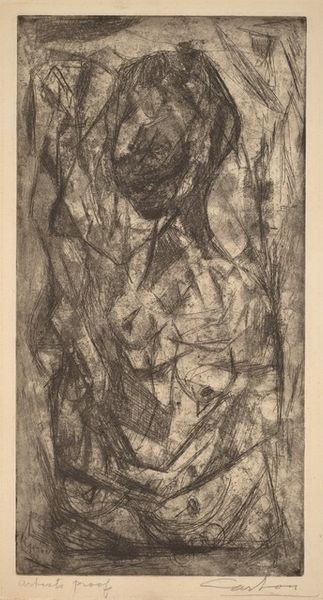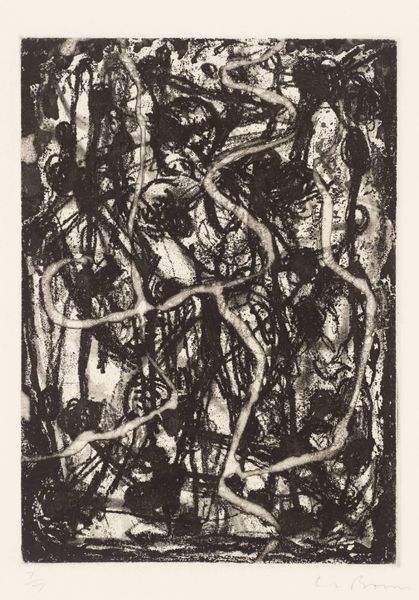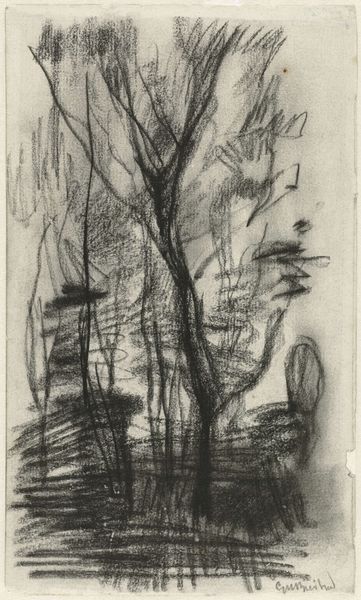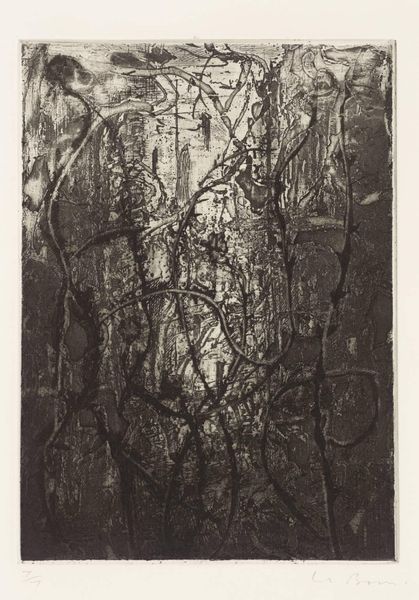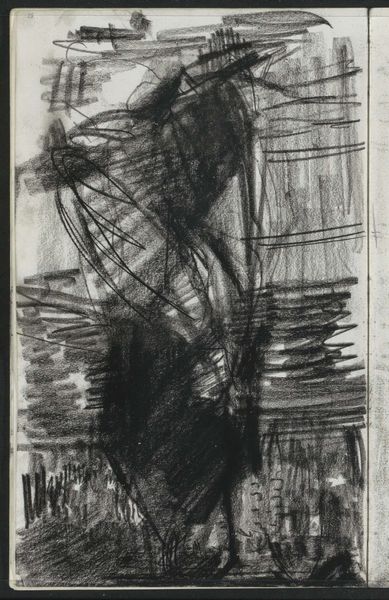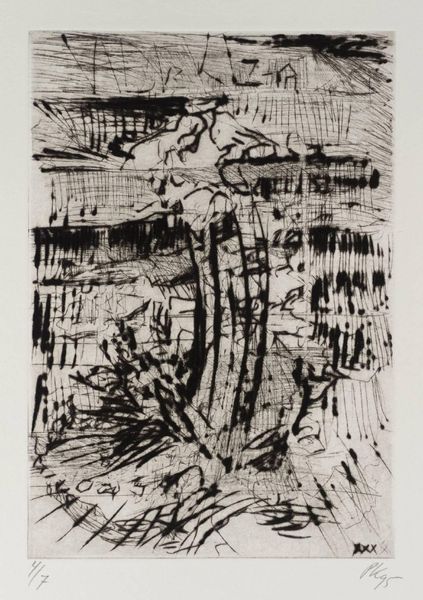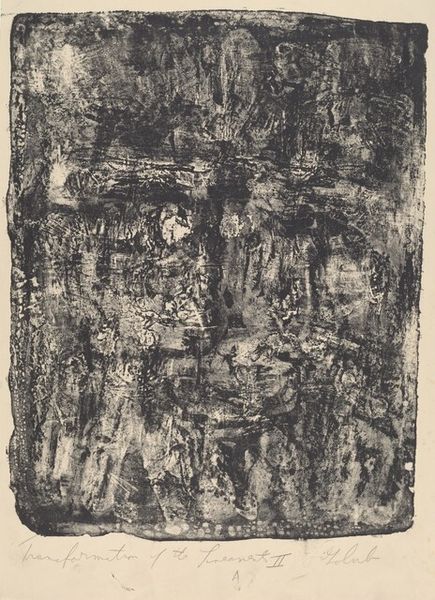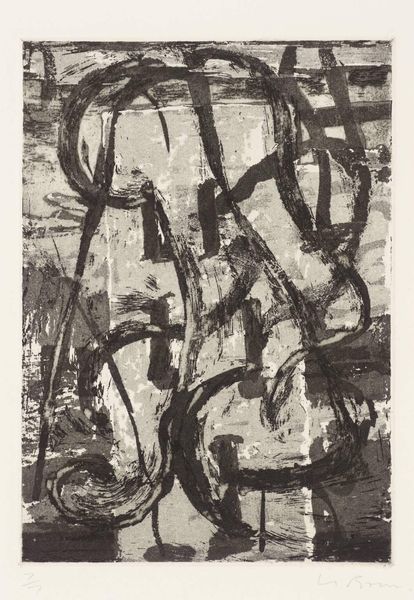![[no title] by Christopher PRA Le Brun](/_next/image?url=https%3A%2F%2Fd2w8kbdekdi1gv.cloudfront.net%2FeyJidWNrZXQiOiAiYXJ0ZXJhLWltYWdlcy1idWNrZXQiLCAia2V5IjogImFydHdvcmtzLzg2Y2RmYmJjLTg2OGUtNDEzZi04ZTA3LTI5NTYzZGE1ZmY1MS84NmNkZmJiYy04NjhlLTQxM2YtOGUwNy0yOTU2M2RhNWZmNTFfZnVsbC5qcGciLCAiZWRpdHMiOiB7InJlc2l6ZSI6IHsid2lkdGgiOiAxOTIwLCAiaGVpZ2h0IjogMTkyMCwgImZpdCI6ICJpbnNpZGUifX19&w=3840&q=75)
Dimensions: image: 175 x 130 mm
Copyright: © Christopher Le Brun | CC-BY-NC-ND 4.0 DEED, Photo: Tate
Editor: This untitled etching by Christopher Le Brun feels… primal. The swirling lines and stark contrast evoke something ancient. What do you see in this piece that speaks to our current moment? Curator: It's less about what I "see" and more about what this piece *does*. Le Brun, working in a neo-expressionist mode, challenges the flattening of experience endemic to late capitalism. The lack of a defined subject, the messy, almost violent mark-making – it resists easy consumption. Does it make you uncomfortable? It should. Editor: Uncomfortable, yes, but also intrigued. It's like it's trying to break free from something. Curator: Precisely. Consider how Le Brun uses abstraction to critique the representational conventions that often reinforce dominant ideologies. It's a refusal to be easily categorized, a pushback against systems of control. Editor: I see that now. It’s more than just abstract shapes; it's a statement. Curator: Exactly. It's about finding agency in ambiguity, challenging the viewer to confront the unresolved tensions of our time.
Comments
Join the conversation
Join millions of artists and users on Artera today and experience the ultimate creative platform.
tate 8 months ago
⋮
These prints belong to the portfolio 'Fifty Etchings'. In executing them LeBrun used a range of techniques. These include: silverpoint and drypoint (to create fine and furred lines by incising the plate directly using pointed tools), etching (in which a wax ground is scratched by a needle-like tool to create more fluid lines), aquatint (to create rich tonal effects), soft ground (a pencil pressed onto paper covering a soft wax ground produces a soft, printed line), and spit bite (in which the plate is bitten by acid brushed on directly). The resulting printed images are often densely layered with strong tonal contrasts. Le Brun contributed an essay to the Morandi exhibition catalogue. Gallery label, August 2004
